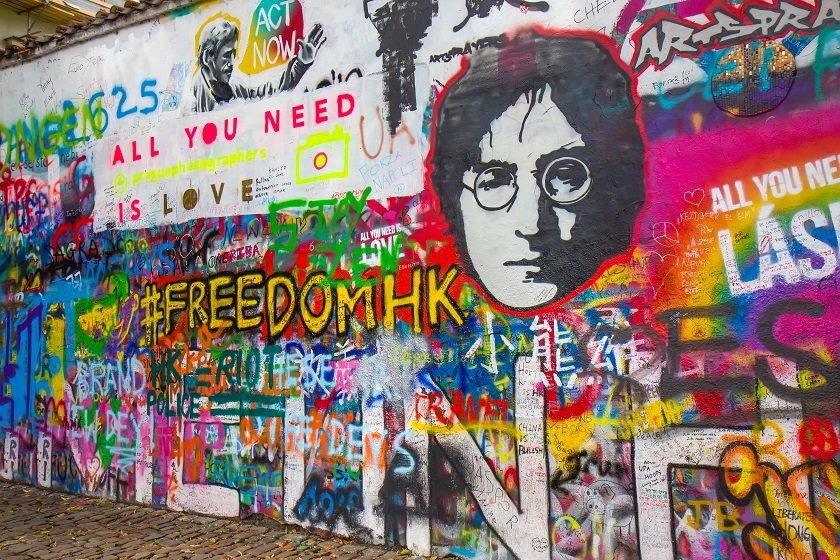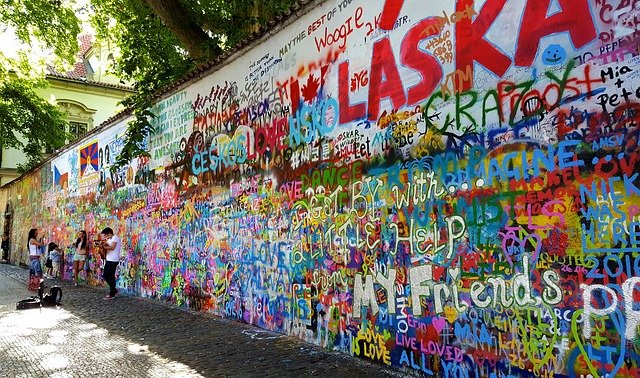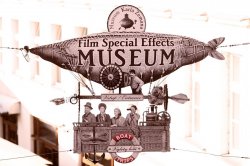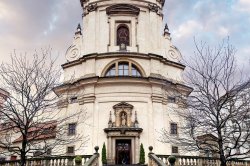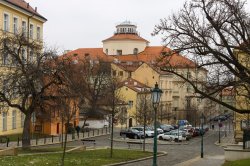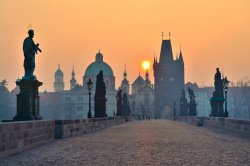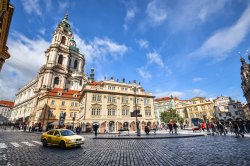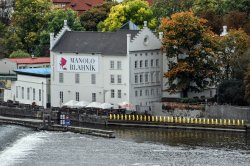John Lennon Wall
As its name suggests, the John Lennon Wall, an extraordinary wall decorated with paintings and writings, refers to singer John Lennon, a member of the Beatles. The first messages were dedicated to Jan Werich, Czech actor, playwright and writer, and people started to inscribe them on the wall in the 1960s. This was soon followed by the addition of chalk-written love poems and anti-regime notes. After John Lennon’s death in 1980, the wall became a symbolic memorial to the singer. Although it has been repainted several times, street artists continue to fill the wall with new paintings and graffiti. In the summer of 2019 was the wall reconstructed due to increasing vandalism. The wall is now decorated by more than 30 artists from five countries. The new motifs of the wall are portrait of John Lennon and a map of the world with the word “freedom” written in 30 languages. Everyone can still express himself/herself on a part of the wall, but only using chalk, a pencil or a fix, no sprays.
Useful information for visitors
Public transport connections
Malostranské náměstí bus stop, tram stop
Opening hours and admission
The John Lennon Wall is open to the public free of charge.
Interesting facts about John Lennon Wall
Originally owned by the Order of the Knights of Malta, the wall became a unique symbol of freedom over the years. In the 1970s, this place, covered with love poems and protest notes, started to be called the “Wailing Wall”. When the legendary British singer was shot in 1980, an unknown author inscribed “For John Lennon” on the empty stone slab. Many people brought candles, wreathes and photos of the singer to the wall. Soon, people started covering it with pieces of lyrics from Beatles’ songs, highlighting the years representing important milestones in Lennon’s life and painting graffiti.
Both samizdat and exile newspapers ran reports on the John Lennon Wall and it was repainted grey and green several times. Instead of love messages, people then covered the wall exclusively with protest slogans.
On the first anniversary of Lennon’s death, dozens of young men and women met at the wall and organized protest marches in Prague in the following years. The Communist Party named this movement as Lennonism and the press described the people as psychopathic.
After 1989, when the wall was returned to the Knights of Malta, painter František Flašar painted the singer’s portrait on the wall at the initiative of the John Lennon Peace Club. Gradually, the portrait became covered with more and more colours, flower paintings and poems.
At the beginning of the new millennium, the John Lennon Wall became a tourist attraction and in 2014 it was painted completely white. After somebody left a message on the wall, “Wall is Over”, referring to the 1971 song “War is Over”, it started to be covered with new slogans. A group of street artists called “Prague Services” claimed responsibility for these new paintings.
